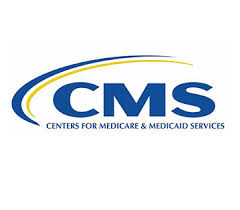by: Neal F. Kassell, MD
Focused ultrasound (FUS) has the potential to improve the quality of life and decrease the cost of care for many patients suffering with essential tremor (ET). For this potential to be realized, however, it must be widely adopted as a standard of care. Widespread use of focused ultrasound relies on two key factors at this time: evidence of the safety and efficacy of the treatment, and sufficient reimbursement by insurance companies. Otherwise, healthcare institutions will not acquire the equipment and/or train physicians to use it, and the technology will not become widely available to patients who request it.
 Robust evidence of safety and efficacy of FUS to treat certain patients with ET was achieved through a clinical trial, the results of which served as the basis for the July 2016 FDA approval for the ET indication. The study’s final data were published in the New England Journal of Medicine in August 2016.
Robust evidence of safety and efficacy of FUS to treat certain patients with ET was achieved through a clinical trial, the results of which served as the basis for the July 2016 FDA approval for the ET indication. The study’s final data were published in the New England Journal of Medicine in August 2016.
In November 2016, the Centers for Medicare and Medicaid Services (CMS) set an institutional payment for focused ultrasound treatment for essential tremor, which went into effect January 1, 2017. After two years, CMS will reevaluate the payment level based on the actual costs of treatments performed during that interval.
While the level of reimbursement currently approved by CMS is less than desired by the neurosurgical community, it is hopefully sufficient to enable adequate numbers of patients to be treated during the next two years. These treatments will generate the cost data needed for CMS to adjust the level of payment later.
The next step toward widespread reimbursement is for local insurance intermediaries to follow suit in establishing coverage, leading to patient access.
Focused ultrasound offers many benefits over deep brain stimulation (DBS), the current standard of care in treating medication-refractory ET. Focused ultrasound is a non-invasive method of thalamotomy that is performed in an awake patient and involves no incisions in the scalp, and no burr holes through the skull or insertion of electrodes into the brain. Additionally, focused ultrasound is a single procedure, whereas DBS patients have return to the hospital for battery maintenance and to adjust electrodes.
Focused ultrasound also offers a decreased cost of care, as patients can oftentimes return home the same day and require less clinical monitoring after treatment. An analysis comparing FUS to other essential tremor treatments was published in April 2017 in Movement Disorders and concluded that FUS is more cost effective than DBS.
We are hopeful that the approval of focused ultrasound to treat ET is only the beginning. It is the first brain disorder to be FDA approved for FUS treatment, and the first to be assigned reimbursement by Medicare. These approvals serve as the predicate to treat other brain indications that are in earlier stages of research and development, including tumors, epilepsy, Parkinson’s disease, and reversibly opening the blood-brain barrier to enable delivery of a range of innovative therapies for other neurological disorders – such as Alzheimer’s disease and malignant brain tumors.
The Foundation now calls upon insurance companies, both commercial and at the local Medicare level, to work toward making the treatment accessible for the patients who suffer daily from their tremors. In addition, anyone interested in receiving focused ultrasound treatment for themselves or a loved one should contact their insurance company to inquire about coverage for the procedure.
